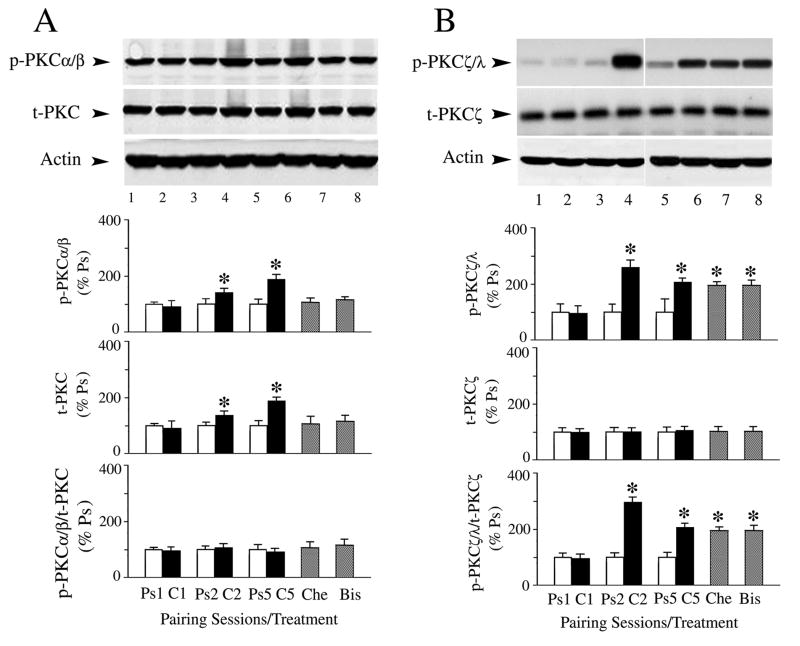Fig. 4.
Differential regulation of PKCα/β and PKCζ protein during early and late stages of conditioning and effects of treatment by PKC inhibitors Che and Bis. Blots and quantitative data are shown for phospho-and total protein during one (C1), two (C2), or five (C5) pairing sessions of conditioning compared to pseudoconditioned controls (Ps). Western blots were also assessed following blockade of CRs by application of Che or Bis. (A) Data show significant increases in both p-PKCα/β and t-PKC after two and five sessions of conditioning. However, the ratio of phospho-to total protein did not change. The enhanced levels of PKC protein were attenuated by both Che and Bis. (B) There is a dramatic increase in the amount of p-PKCζ/λ, but not in t-PKCζ, after two pairing sessions of conditioning. These levels are maintained at significantly elevated values after five sessions, and are unaffected by the compounds Che or Bis. P values are given in the text.

